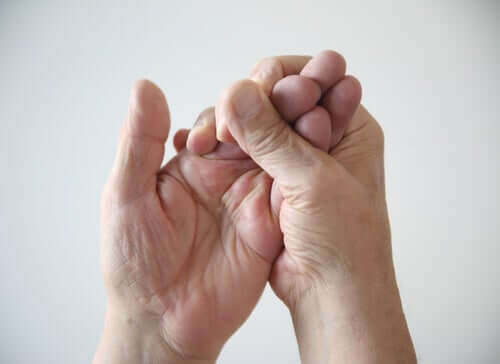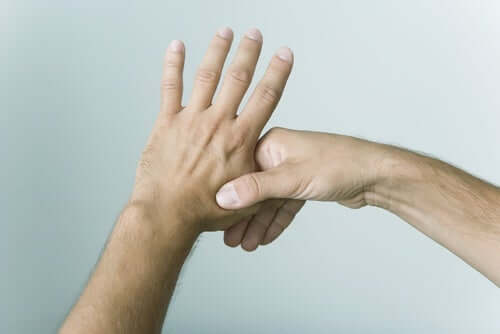Five Hand Nerves You Should Know About

The hand nerves are an absolute miracle! The fingertips are one of the most innervated areas of the body. That’s why they’re the main sources of tactile information.
The main hand nerves
For didactic reasons, hand nerves are usually divided into two groups: those that predominate in the back of the hand and those found in the palm. However, these aren’t separated. Instead, they make up an interconnected nerve network.
Hand nerves are responsible for conveying sensory information to the brain and contribute to the movement of the hands, fingers, and arms. Below, we explain five of the most important ones.
1. The median nerve

The median is a sensorimotor nerve. It innervates the muscles of the forearm and palm. It consists of two parts: internal and external. The external division of this nerve leads to the palmar digital branch of the first finger. Also, to the external palmar digital nerve of the second finger.
Meanwhile, the internal division results in the internal palmar digital nerve of the second finger. Likewise, the external and internal palmar digital nerves of the third finger and the external palmar digital nerve of the fourth finger. It’s responsible for sensation in the outer half of the palm.
The median nerve innervates the flexor carpi radialis, palmaris longus, and flexor digitorum superficialis. Due to its location, it may suffer entrapments at different points.
This article may interest you: Effective Infusions for Improving the Nervous System
2. The ulnar nerve
The ulnar nerve is defined as a mixed nerve. This means that it combines motor and sensory fibers. It has a superficial branch that’s supported on the hook of the hamate bone at the wrist.
It supplies the palmaris brevis and gives digital branches to the medial one and a half fingers. Also, it supplies the 3rd and 4th lumbricals and all the palmar interossei muscles and dorsal interossei of the hand. This nerve only innervates two muscles of the forearm: the flexor carpi ulnaris and the medial half of the flexor digitorum profundus.
It mostly innervates the muscles of the hand. It’s responsible for skin sensitivity in the ulnar half of the palm and the back of the hand. Also, in the fourth and fifth fingers.
3. The radial nerve

One of the six most relevant hand nerves is the radial nerve. It’s located in the palm of the hand. It innervates the dorsal aspect of the hand, the dorsal aspect of the thumb, index finger, middle finger, and the lateral side of the ring finger except the nail beds.
This nerve is a sensory-motor nerve. It’s involved primarily with the extension movements of the elbow, wrist, and fingers. Also, with forearm supination. In other words, when that area rotates outwards and inwards.
It innervates several muscles, including the triceps. Also, the dorsal arm muscles (the triceps brachii and the anconeus) and the extrinsic extensors of the wrists and hands. In addition, the long head, medial head, and lateral head of triceps brachii muscles.
You may be interested in: 6 Ways to Strengthen Your Nervous System
4. Cutaneous radial nerve
This is located on the back of the hand. This nerve pierces the aponeurosis of the forearm. That is, the layer of tendons located in that area. It passes under the brachioradialis tendon. Then, it joins the radial motor tendon at the elbow.
The cutaneous radial nerve innervates the phalanges of the thumb and the first phalanx of the index finger. Also, the outside of the first phalanx of the third finger and the back of the hand.
5. Cutaneous ulnar nerve

It corresponds to the dorsal branch of the ulnar nerve. Basically, it innervates the inner part of the third finger and the edge of the nail of the fourth finger on the inner part. Similarly, the inner and outer edge of the fifth finger.
All cited sources were thoroughly reviewed by our team to ensure their quality, reliability, currency, and validity. The bibliography of this article was considered reliable and of academic or scientific accuracy.
Netter, F. H., & Brass, A. (1994). Sistema Nervioso, Tomo I: Parte 1. Anatomía y Fisiología (Vol. 1). Elsevier España.
This text is provided for informational purposes only and does not replace consultation with a professional. If in doubt, consult your specialist.








